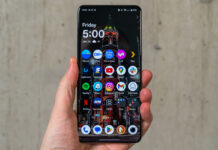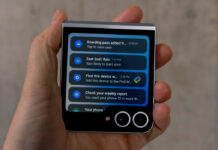![]()
Google has re-entered the mid-range smartphone arena with the new Pixel 3a (and Pixel 3a XL), offering one of the best affordable handsets available.
If you look at the Pixel 3a as a pared-down Pixel 3, the flagship Google launched last fall, you wouldn’t be wrong. The form factor and feel of the device is really similar. While Google did sacrifice some features to bring the cost down, it retained others that are important to the device’s usability.
Google Pixel 3a SpecsDisplay: 5.6-inch 2220 x 1080 OLED display 18:5:9 aspect ratio with 441 pixels per inch |
Pixel 3a design
My review of the Pixel 3 covers that phone’s design, features, and performance, so what’s different between them? For starters, the Pixel 3a doesn’t have wireless charging nor any water-resistance. Drop this accidentally in a toilet or pool and you may have problems.
It also has a slower processor with the Snapdragon 670, though you may not find that to be an issue. It only comes with one storage option (64GB) and has 4GB of RAM. The Pixel 3a screen is also 5.6-inches, a mere 0.1 inches larger than the flagship model. It’s also not Gorilla Glass, but an alternative typically used in lower-priced handsets. There’s also no eSIM functionality inside, and the SIM card slot itself is on the left edge, not at the bottom.
It’s negligibly lighter than the Pixel 3 and features an identical design pattern. The part-glass, part-plastic in the back, plus button, ports, speaker, fingerprint sensor and camera placement are all arrayed the same way. Put the two phones beside each other and it’s not immediately easy to notice the difference.
One of the giveaways, however, is that the Pixel 3a only has one front-facing camera. The regular Pixel 3 has two, as the extra one was for wide-angle selfies. And perhaps, more importantly, there’s a headphone jack on this phone. Where the regular Pixel 3 didn’t have one, the Pixel 3a does.
![]()
Performance
The difference in processor does make the Pixel 3a slower than its flagship sibling, but it’s not a glaring contrast. Google optimized the software to run efficiently, and it shows. While actual numbers and metrics would indicate a different story, I never felt like the Pixel 3a was slower. I didn’t struggle to use it.
If you’re coming from another Pixel device, the transition is as seamless as it gets. You won’t really feel it. To maintain the same experience as much as possible, Google included many of the same usability features. For example, squeeze the sides and you launch Google Assistant. The one catch is that you can’t remap that function to launch something else. It’s either Assistant or nothing.
Augmented reality (AR) navigation through Google Maps works. Other features, like Call Screen, Night Light, Digital Wellbeing and the camera are also intact. The screen isn’t quite as vibrant as the Pixel 3, but it’s still vivid and looked great to me when using it. It’s not the brightest display you’ll find, which I noticed when looking at it under sunlight.
If you want a headphone jack, the Pixel 3a delivers. Unlike the regular Pixel 3, listening to music without an adapter is easy. You could also use Bluetooth headphones, but the point is that in a time where headphone jacks are disappearing, Google actually includes one in this mid-range handset.
If there is a weakness here it’s in doing more intensive things. This isn’t the most ideal phone for gaming, and it’s unclear how well the phone will hold up once you start loading it up with apps and taking up almost all of the 64GB of storage. To save on that, Google Photos backs up images at a compressed file size—not the original size as it does on the Pixel 3. If you want to maintain the original quality, you may have to use another backup for your photos and video.
![]()
Camera
Google didn’t include the Visual Core SoC chipset the Pixel 3 specifically has for the camera. Even so, the Pixel 3a is already one of the best shooters you can find in its price range. The Pixel 3a has the same 12.2-megapixel image sensor for the rear camera, complete with optical image stabilization (OIS) with f/1.8 aperture.
Much of the software also remains the same, leading to excellent photos. I felt the Pixel 3 was one of the two best smartphone cameras when it launched, and I still feel it’s in that position. The Pixel 3a, in most circumstances, produces comparable results, which is really something considering this isn’t a premium device. To have something mid-range that shoots like a flagship was pretty much unheard of until now.
The reason it all works so well is because the modes are all in there. Night Sight continues to be an outstanding feature for capturing good scenes in low-light or night conditions. As before, it works best with static subjects that aren’t moving, and that’s okay. Capture someone in front of a landmark at night and the image will look great almost every time.
The bokeh effects in Portrait mode are as good as you would expect. Colours and tones will usually skew darker and colder, which is especially evident in high contrast scenes, so you may need to brighten them later if that’s the look you’re going for. The built-in HDR (high dynamic range) also does a great job pulling out detail in highlights and shadows.
Other features, like Top Shot and Super Res Zoom, are also available. I compared the Pixel 3a to its flagship sibling and, when viewed on their respective screens, it wasn’t easy to discern the differences between them. They shoot very similarly, and to me, that’s one of the biggest positives of this phone.
Google also added timelapse video to the Pixel 3a, so if you’re interested in shooting that way, it’s there to try. Video quality is okay, though perhaps a little less vivid than I would’ve expected.
The front-facing camera is decent. It’s essentially the same as the standard one in the Pixel 3. You won’t get wider-angle shots, but you will get great selfies in Portrait mode.
Battery life
The Pixel 3a beats out the Pixel 3 in battery life, though that’s hardly surprising. The slower processor coupled with the nimble software makes for a daily workhorse. I easily went over 24 hours on a charge with mixed usage. If I streamed or watched a lot of video, I got through a full day relatively easily too.
Google includes an 18-watt charger in the box. In 15 minutes, you can go up to 60 percent. That somewhat offsets the lack of wireless charging. Either way, battery life should hold up well with this phone.
Final thoughts
This isn’t the prettiest phone, nor the fastest or most powerful. But that’s okay for a mid-range phone. You have to expect a few trade-offs. Despite that, the Pixel 3a excels as a pared-down iteration of a flagship stalwart. It’s efficient, steady, functional, user-friendly and the best camera in its class.
Finding an expensive phone isn’t hard. Finding one more affordable with such a superb user experience and camera is harder to do. If you’re on a budget or looking to try something new, you won’t go wrong with this one. If you want a bigger screen and even longer battery life, go with the Pixel 3a XL.
The Google Pixel 3a and Pixel 3a XL are available now.












